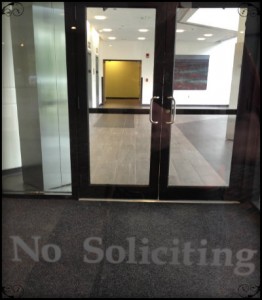Sales Myths – Activity Equals Value
It always blows me away that people think sales is some sort of magical art practiced by a dark cabal of untouchables. It’s not. These myths are perpetuated by partly by ignorance, but also by a disconnect between the activities of a sales process and the value created by the sales process.
I’m going to explain why sale is not magic and sales people are not an alien race with special powers. I’m also going to explain why you do have to tread carefully when trying to decompose ‘sales’ into ‘sales activity’. There are right ways and wrong ways the key is to manage the tradeoff between value and predictability.
The kernel of truth in the ‘sales as magic’ myth is the inherent complexity of the sales process. On the surface it can look simple, like a Hollywood rendering of men in suits shaking hands in a conference room. The reality is that it is a complex multidimensional process that involves the messiness of people and emotions.
The tension between ‘Sales’ and ‘the Business’ manifests from the business’s need for predictability. The CFO will tell you that while the sales forecast is frustratingly unpredictable, the bills are very predictable. Operations, budgets and planning all derive from the sales forecast and those bozos over there in sales are unpredictable!
This drives the analytical folks nuts. Why can’t sales just run a predictable process like the rest of us? Compounding this, most of the sales team are ‘expressives’ – big picture people who like vision more than details. The two personality types are on the opposite sides of the spectrum, they are trying to work together and behaviorally they are alien to each other.
Of course, if you are a billion dollar brand with plenty of volume you can get into a nice sales volume rhythm, but even these folks complain about predictability and process.
The big problems come with businesses involved with large, non-discrete items like a multi-million dollar consulting project. The sales flow for these types of things is “Large and Lumpy”. These sales are not off a shelf in a store. They are a product of a long and complex sales cycle involving people, process and technology.
That’s why it looks like magic to outsiders. They only see the last part, the close and the commissions. They don’t see the complex process that led up to the event.
Eventually a more process-based business leader gets involved and decides to impose some order on the chaos of the sales process. They get everybody in a room and whiteboard the ‘steps to the order’.
Let’s simplify it for this discussion. A simple 10 step process.
Marketing – Prospecting – Qualifying – Discovery – Presentations – Proposals – Negotiation – Close – Engagement – Review.
I’ve seen official sales processes with close to 100 steps.
The gut reaction of an analytical manager is to codify these steps and start to measure them. All your favorite CRM systems are based on this assumption of codifying the steps of the process. As the opportunity progresses through the sales funnel it becomes more likely to end in value. It also becomes more costly.
This is where the assumption that ‘sales is a number game’ comes from.
I have no problem with defining a common sales process for your team. The tricky part is when an analytical person gets involved and starts to equate activity to value. The activity itself has no inherent value. The way that activity is executed can either add value or not. Simply measuring whether the activity happened tell you nothing about the value that activity added to the process.
That’s the first mistake.
The second mistake is to make the leap “If activity equals value, then more activity equals more value”. Not really. More non-value-add activities actually destroys value. You need to find those activities that add value or find a way to make the activities add value – then you can sum them up into overall value.
It is a mistake is to interpret efficiency with effectiveness. Many of the activity based CRM processes measure ‘how many’ and try to equate that with effectiveness. The art to sales is to measure those things that allow you to manage the tradeoff between activity and value.
You may ask, “So, Smarty-Pants, what do we measure?” You measure essentially the same process but with a different lens. Don’t measure solely for volume of events or activity. Measure the activities in light of their effectiveness. In Sales effectiveness is new sales and happy customers, but these results are decoupled from the individual activities of the sales process.
The opportunity is like a big probability cloud. There is no way to push it linearly like a arrow to the target. Each interaction and activity influences the cloud and moves it towards the goal. You have to understand each activity’s ability to shape the opportunity and adjust your focus as you go.
That’s why it looks like magic. That’s why it defies analytical skill. That’s why you need to have people who are skilled and flexible enough to surf the inherent chaos of the process. That’s why you, as an organization, need to understand the uncertainty envelope around each opportunity and manage that.
Bottom line: don’t decouple Sales value and sales effectiveness from the process by trying to atomize the process into discrete mathematical events. Manage the value and the uncertainty.
Does that make sense?
Chris,

